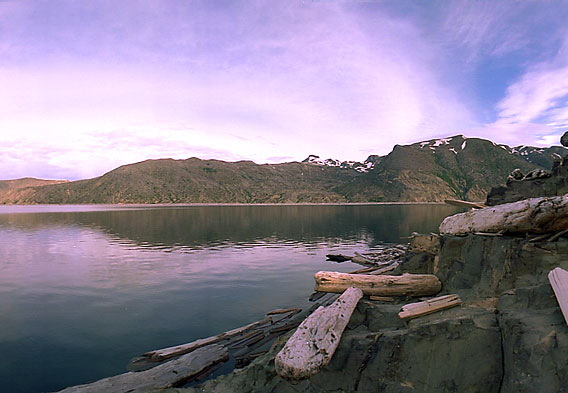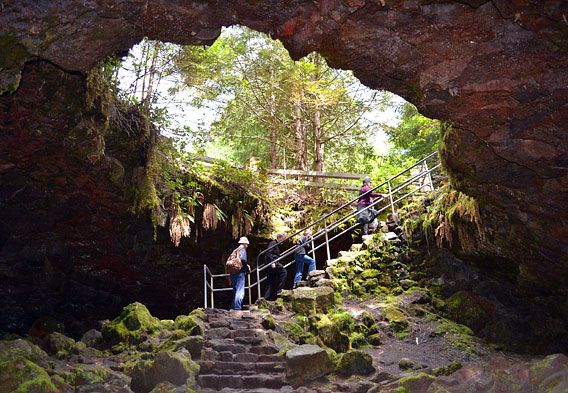- Summit 2016 —
- 2011 —
- 2006 —
- 2003 —
- Compare 2006/2003 —
- Compare 2011/2006
Mt St Helens Summit can only be reached on foot. Although no technical skills are required, it is a rugged trek on steep and uneven trails often requiring scrambles over rough volcanic rocks. You need to be in good physical condition, prepared for mountain wilderness conditions, changeable weather (including snow before mid-summer) and in possession of a permit. It takes from six to twelve hours to hike in and back out again over a distance of almost ten miles. The trek is well worth the effort, as the scenery is beautiful and the panorama from the summit provides superb views of the 1980 blast area and crater, the cone, lava dome, and surrounding mountains and forest.

Spirit Lake
Once a crystal clear mountain lake popular with outdoor enthusiasts, Spirit
Lake was devastated by the 1980 eruption. The debris from the landslide caused
by the eruption increased the size of the lake almost two-fold and reduced its
depth by the same amount. The surface was covered with thousands of tree trunks
ripped out of the ground. Lava and volcanic gases eliminated all oxygen from
the water, essentially killing the lake and all life within it. Scientists predicted
the lake would never recover, but today it is on the road to recovery.

Ape Cave
Ape Cave
is located within the Gifford Pinchot National Forest. It is a volcanic lava
tube, unusual in the Cascades Mountain Range. It is the longest continuous lava
tube in the continental United States, but there are longer ones in Hawaii.
There is a Forest Service Interpretive Center near its entrance where you can
rent lanterns and book guided walks during the summer months. Dress warmly,
as the temperatures never go higher than 42 degrees Fahrenheit, wear sturdy
non-slip shoes, and have at least two light sources per person.

Johnston Ridge Observatory
This observatory and interpretive center is located at the end of State Highway
504 in the very heart of the blast zone. It contains a fascinating collection
of information on the volcano, the 1980 eruption, and harrowing first-hand stories
from survivors and eyewitnesses. This area provides the best views of the mountain
that you will get without climbing it!
Must See Sights
Gifford Pinchot National Forest surrounds Mt
St Helens, and is a wonderful natural area with hiking, camping, cycling,
mountain biking, fishing, and other outdoor activities. Lava Canyon is a beautiful
canyon on Mt St Helens. After the 1980 eruption, a suspension bridge was built
precipitously over the canyon and the spectacular falls below. It leads to a
hiking trail over the area devastated by the eruption.
Back to top © 2025 Dan Taylor/Destination360. All Rights Reserved